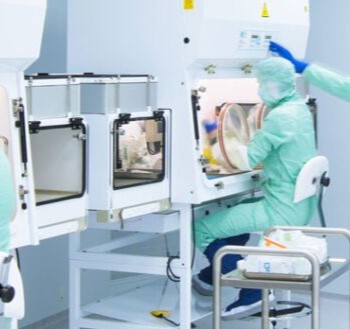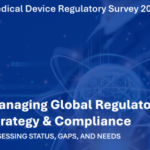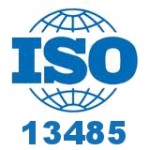In a watershed moment for the diagnostic test industry, the Food and Drug Administration (FDA) this April issued a long-anticipated rule overhauling how Laboratory Developed Tests (LDTs) are regulated. The rule aligns LDTs’ regulatory framework with that of medical devices and details the agency’s rationale for removing enforcement discretion from most LDTs.
The rule expands the FDA’s authority over a broader set of products to mitigate public concerns over misleading or false test results. However, with this broader regulatory authority comes apprehension over the potential negative impact on patient access. As the new regulatory framework is phased in over the next four years, stakeholders—including laboratories, the wider diagnostics industry, patients, healthcare providers, and payers—must consider the wide-ranging implications of the rule.
How is the regulation of LDTs changing?
Under the rule, all in vitro diagnostic tests—including LDTs—will be recognized as medical devices under the federal Food, Drug, and Cosmetic Act. The FDA will classify LDTs based on their risk level and intended use. Higher-risk tests will be subject to more rigorous regulatory requirements, while lower-risk tests will have a more streamlined review process.
Laboratories that create LDTs will be required to undergo pre-market review, meaning that they will need to prove clinical evidence to validate the performance and safety of these tests. Additionally, the rule broadens the definition of LDTs to encompass tests developed by high-complexity laboratories and those intended for rare diseases, increasing the range of tests subject to FDA regulation.
In May, the FDA hosted a public webinar on the rule, where it clarified specific implementation timelines and scopes, explained the phaseout process for general enforcement discretion, and answered stakeholder questions. FDA representatives at the webinar also noted that the administration is expected to issue guidance on the phaseout in May 2025 and continues through 2028. Additionally, the FDA will pursue reclassification of Class III IVDs into Class I/II. This would result in an increased number of LDTs for which general enforcement discretion with respect to certain requirements may apply.
Who is affected by the rule?
- Laboratories: There are more than 320,000 laboratories in the United States, of which 12,000 are certified to develop and deploy LDTs. These labs will need to undergo pre-market review and will potentially face more rigorous regulatory requirements based on the risk classification of their tests, which will require substantial investment to ensure compliance.
- Diagnostics Industry: This industry has the potential to benefit from clearer commercialization pathways, opening avenues for innovation. However, companies in the development and commercialization of LDTs will need to adjust their practices to meet the new regulatory requirements, which could involve investing in additional resources for pre-market review and compliance efforts.
- Patients: Patients may benefit from improved access to more accurate and reliable diagnostic tests. The increased oversight and standardization of LDT regulation could lead to better healthcare outcomes and reduced risks of misdiagnoses or ineffective treatments.
- Healthcare Providers: Healthcare providers who rely on LDTs for patient care may need to reconsider their use of certain tests and ensure they are ordering tests that comply with the new regulations. The new regulations may help streamline the diagnostic odyssey and patient journey, ensuring faster diagnosis and treatment.
- Payers: Public and private payers may implement coverage and reimbursement policies for LDTs. For example, they may require tests to meet the new regulatory standards before approving coverage, which could impact patient access.
What is next for stakeholders?
Both diagnostic manufacturers and pharmaceutical sponsors with therapeutics that rely on biomarker identification or companion diagnostics should adjust their commercialization and partnership strategies to fit the new regulatory environment. The rule grants the FDA a clear mandate over LDTs, offering stakeholders more certainty around evidence requirements and opportunities for marketing clinical claims in the future.
To take advantage of this new landscape, stakeholders should consider:
- Evaluating new safety and effectiveness evidence requirements for on-market and pipeline diagnostics;
- Reassessing how they are prioritizing pipeline products, based on the revised evidence burdens vs. market potential;
- Establishing and expanding evidence generation plans (e.g., developing health economics and outcomes research roadmaps);
- Capitalizing on the value of real-world data for on-market diagnostics (e.g., targeted evidence by population and intended use);
- Assessing development and/or commercialization opportunities that may arise with new targeted evidence (this may include evidence supporting use of products in diverse patient populations to facilitate equitable access); and
- Considering collaboration opportunities between pharmaceutical and diagnostic sponsors to enhance treatment access.
The Bottom Line
The final FDA rule changes the paradigm. By explicitly defining LDTs as a type of in-vitro diagnostic tests, it becomes subject to FDA enforcement both pre- and post-market. The rule affects commercialization through requirements for an expanded level of evidence demonstrating safety and efficacy.
Diagnostic manufacturers will need to consider adapting current development and commercialization strategies in response to policy changes. Pharmaceutical sponsors with therapeutics that rely on biomarker diagnostics will have a new set of considerations as they map their companion diagnostic partnership strategies.







